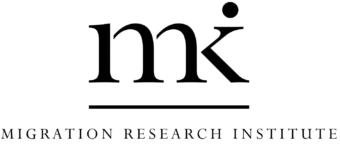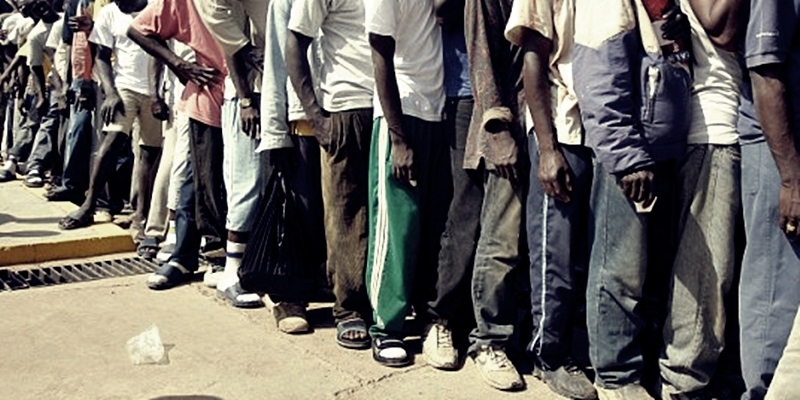
Scarcely talked about: The intermediaries of migration
Analysis by Balázs Orbán
We talk much about the migrants, but less about the intermediaries of migration. Some move the migration movement along out of philanthropy, others because they are plain criminals, taking money for people smuggling. What is the role of intermediaries in this new type of migration?
The scientific literature on migration describes migration in a traditional way, as an interaction between states and individuals. This is certainly not that far apart from the real stance. When considering migration, we automatically put on glasses through which we try to understand the relevant migration movement we are examining. These glasses, or this perspective, if you will, can be that of the source, the transit or the target country, or the people who are migrating.
Of course, the glasses or the perspective chosen will in most cases determine how we think about the given migration movement.
For example, the people who are migrating, will perceive the route and the procedures, however open these might be, as hardships, and as obstacles to overcome. And the other way around, for states, these emerge as issues necessary to maintain control.
These two sets of glasses, or two perspectives, along with their different approaches, are opposed to one another with differences impossible to reconcile. In the last two years, we have all experienced their everyday manifestations. They might have hit many as novelties in 2015, but they became evidences by now.
The last two years brought an obvious shift in at least one area.
The fight against irregular migration became the focus of international political debates. It is much easier to talk about everything that belongs to this issue without having to withdraw from mainstream public discourse in Western Europe.
In addition, we are at a transitory moment of grace, as there are less people arriving to the continent now than any time since 2015. However, upon looking at the neighboring areas of Europe, we can surely assert that the respite is only temporary, as no serious individual would deny that the migratory pressure on Europe will not decrease, but increase in the decades to come. In addition, there are conflicts which seem irresolvable between the member states of the Union in the issue of migration. The more rational voices seem to be coming to an agreement that the fight against irregular migration can be the least common point in which countries with wholly different opinions can cooperate.
This situation can be a good breeding ground to understand the real driving forces behind irregular migration, and – in case this is really our purpose – in the effort to neutralize them.
Another evidence is that irregular migration is driven by people-trafficking networks today. With an acceptable simplification, we can say that no irregular migrant gets into Europe without the help of these criminal groups[1].
People smuggling is a criminal category in all EU states, and it is considered an illegal activity in most regions under the Union’s sphere of influence.
Yet, this is not the case everywhere. Let me give you one example: In the far corners of Africa, where nation states and borders are non- or barely existing concepts, transporting people from point A to point B for compensation is not considered a despicable activity at all, especially when compared to drug trafficking, for example.
In addition, people smuggling becomes more and more the territory of radical Islamists, who specifically intrude in this business for the enormous profit in it and their religious motives. As a vicious circle, this keeps destabilizing the region, since the criminal groups and the religious fanatics can carry out these activities undisturbed only with weakened central states. And they do all in their power to weaken the central states – this is the purpose of terrorist incidents and anti-state religious propaganda among the youth.
There is another important connection as we start to talk about an internal dimension. The context of states versus people migrating is not the only way to explain irregular migration. International scientific literature also deals with the phenomena of so-called intermediaries being present on the chess board of migration, in addition with all involved, and they – unaware or on purpose – play a very important role, making the fight against irregular migration impossible.
Maurizio Ambrosini, an Italian professor categorizes these intermediaries according to the type of intermediation and the type of people doing the intermediation in his work entitled “Why irregular migrants arrive and remain: the role of intermediaries”, published in 2016[2].
| Types of intermediation | Activities | Actors |
| Connection | Helping immigrants access resources, establishing contact, releasing information about travel, work and accommodation possibilities. | Illegal immigration “agents” both in the sending and in the receiving societies. |
| Provision of certain services | Providing legal, illegal and semi-legal services as needed by the immigrants (for example, obtaining documents, legal assistance, language courses). | Various legal and illegal service providers, individuals and organizations acting for profit or for moral conviction. |
| Help | Concrete and individual help for a needy (e.g. giving money/food). | Ordinary citizens. |
| Tolerance | Neglecting the controls of the identity and legal status of people, on purpose or due to carelessness. | Especially public authorities. . |
| Political pressure | Lobbying for the rights of migrants. | NGOs, trade-unions, churches, social movements. |
| Types of intermediaries | Activities | Beneficiaries | Migration stage |
| People smuggling | Organizing departure and travel, entry into target country through various channels and strategies | Determined immigrants, who have no other way of entering. | During travel and arrival. |
| Illegal immigration “agent” of the came ethnicity | Matching labor demand and supply, patronage, document and accommodation provision, other services. | Immigration “agent” of the same ethnicity. | Upon entrance. |
| Employer | Providing employment, maybe proceeding with formal procedures. | Employer and immigrant employee. | Stepping out into the labor market. |
| NGOs, other social organizations. | Providing alternative public services (meals, health care), compensating for lack of access to legal services. | Illegal immigrants with special needs, requiring organized care. | Usually in the first phase of settlement, and whenever needed. |
| Ordinary citizen | Immediate and direct aid, without the instrumentality of an organization. | Needy or personally known immigrants. | Usually in critical situations. |
| Public authorities or servicemen | Benevolent interpretation of the law, information, neglecting monitoring. | Immigrants deemed to be not dangerous or salient. | Anytime, but especially upon checks or during formal procedures. The motivation behind these actions vary greatly. There is plain philanthropy behind some, while others unequivocally look for financial gain. |
But how does this work in practice? Let me give you one recent example: A pilot in the United Kingdom denied takeoff[3] upon learning that there was an Afghan illegal migrant on board, being lawfully deported to his mother country.
Is the pilot right in thinking that it is awful to go back to Afghanistan? Yes, he is! To demonstrate the shameless hypocrisy of Europe, I usually call attention to the fact[4] that ever since the civil war in Syria, there is a rocketing recognition rate of Syrians as refugees, while the recognition rate of Afghanis on the decrease[5].
Hence, we Europeans think that Afghanistan became a better place in recent years than before.
I recommend that everyone who thinks so should spend a long week-end in Kabul and in Damascus.
The difference will be tangible – in favor of the civil war-torn Damascus!
Afghanistan did not become a better place, but since we should – normally – get along better with the Syrians than with people from inland Asia, we tend to favor them. It is not by chance that we see a tremendous amount of tension between Syrians and other asylum seekers from Asia and Africa due to positive or negative discrimination, though in most cases there is no national conflict giving rise to it.
Has the pilot gained some material profit from this move? Likely not. Indeed, he might have had to suffer retaliation at his workplace.
Did the pilot do the right thing on a micro level? He is most likely convinced to have done the right thing, and his mental health has likely improved from his brave stand.
Still, the situation is very different on a macro level. The study referred to above also claims that until we define the activities of intermediaries, and make everyone aware of the macro level consequences of these activities, we cannot secure lasting results in confining irregular migration. Departing is conditional on the prospect of success. Therefore, if the conditions along the road and the host environment are favorable (at least not on the surface, but in the deep structure), then departing will always be an appealing option versus staying.
Researchers Godfried Engbersen and Dennis Broeders published a study entitled “The State versus the Alien: Immigration Control and Strategies of Irregular Immigrants” in 2016[6], in which they analyze Dutch and other European cases, and observe that since the 1990’s several studies discovered that the irregular immigrants are assisted by several informal institutions, actors in the developed host countries (compatriots, employers, clergymen, lawyers, and public service workers, including policemen and mayors). The host state can resort to three typical strategies to oppose this phenomenon: (1) turn a blind eye for economic and humanitarian reasons; (2) adapt programs that convert the illegal stay into legal (which, in terms of the end result, is the same as the former strategy); or (3) start an intervention that will break the irregular structures.
The situation is not a simple one, as indicated by the following experience: migrants react to powerful state action described in point (3) with a change of strategy, and shift to the black market, to criminal behavior, and try to make their identification impossible.
It is also important to note the connection pointed out in other studies: making immigration policy more severe lowers the number of arrivals into that country, but it also lowers the so-called circulation. This means that those presently located in the country, being afraid of losing their access to returning, will be less likely to leave the territory of the country[7].
Consequently, if a country already has a major immigrant community, the value of intermediaries goes up, and not even a more strict immigration policy can have the desired public policy effect.
Therefore, our country should make at least two moves: (1) Efforts to understand and neutralize the driving forces behind irregular migration should continue. This is especially true for efforts to understand the intermediary activities. (2) In the meantime, we should avoid the formation of an immigrant community of arrivals via irregular migration, because the efficiency of border control measures and a more severe immigration policy will decrease afterwards.
And the British pilot should be sent respectful regards from afar.
Original publication:
September 19, 2017. 12:57 AM
Mandiner
[1]http://https/utm_source=mandiner&utm_medium=link&utm_campaign=mandiner_201711://www.europol.europa.eu/publications-documents/migrant-smuggling-in-eu
[2]http://www.tandfonline.com/doi/abs/10.1080/1369183X.2016.1260442?journalCode=cjms20&utm_source=mandiner&utm_medium=link&utm_campaign=mandiner_201711
[3]http://mandiner.hu/cikk/20170901_megtagadta_a_pilota_afgan_utasanak_deportalasat?utm_source=mandiner&utm_medium=link&utm_campaign=mandiner_201711
[4] http://ec.europa.eu/eurostat/statistics-explained/index.php/File?utm_source=mandiner&utm_medium=link&utm_campaign=mandiner_201711:First_instance_decisions_by_outcome_and_recognition_rates,_30_main_citizenships_of_asylum_applicants_granted_decisions_in_the_EU-28,_1st_quarter_2017.png
[5] https://globalnews.ca/news/3398462/germany-afghan-asylum-seekers/?utm_source=mandiner&utm_medium=link&utm_campaign=mandiner_201711
[6]http://www.tandfonline.com/doi/abs/10.1080/01402380903064713?utm_source=mandiner&utm_medium=link&utm_campaign=mandiner_201711
[7] https://www.imi.ox.ac.uk/publications/wp-89-14?utm_source=mandiner&utm_medium=link&utm_campaign=mandiner_201711
